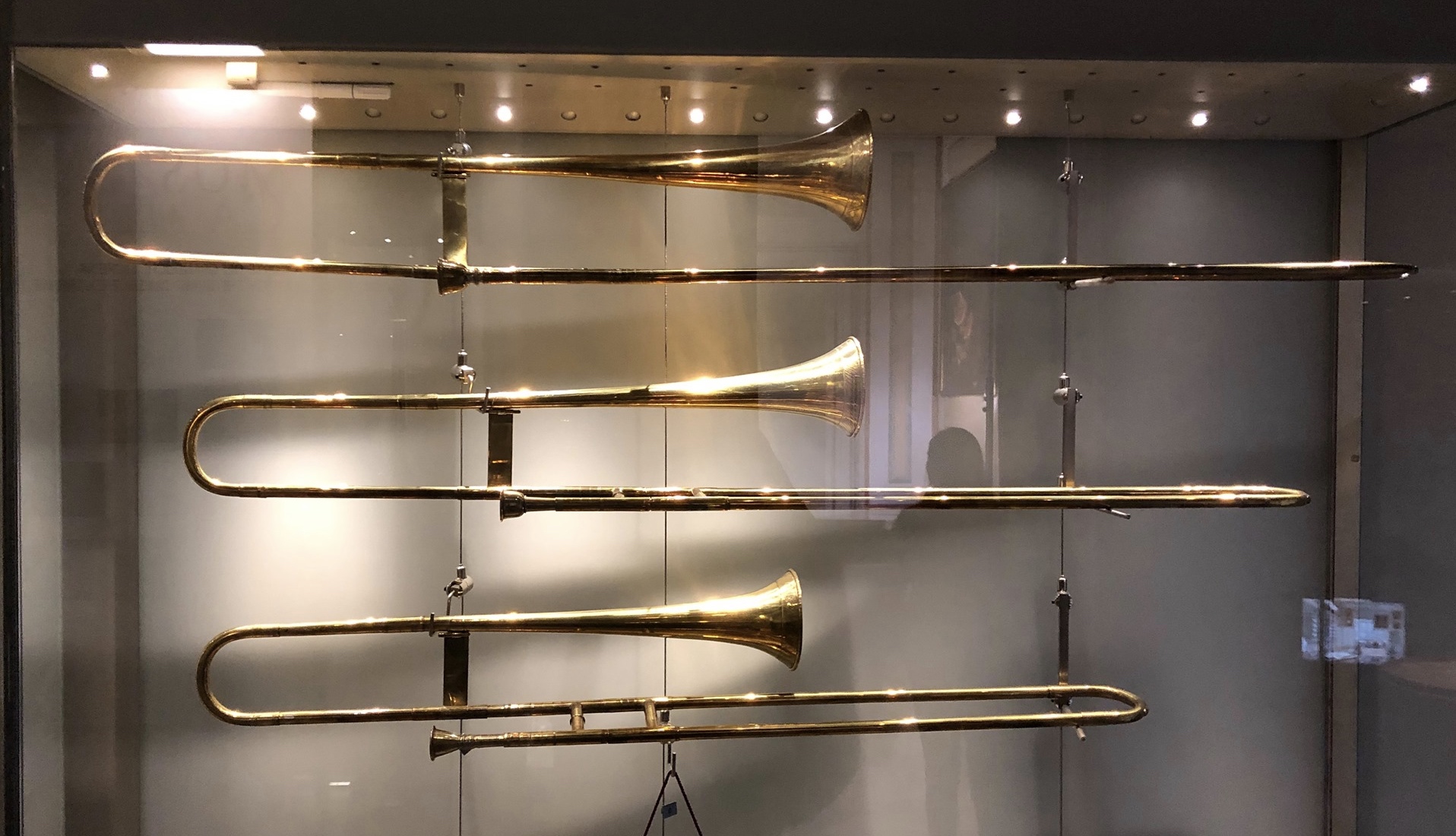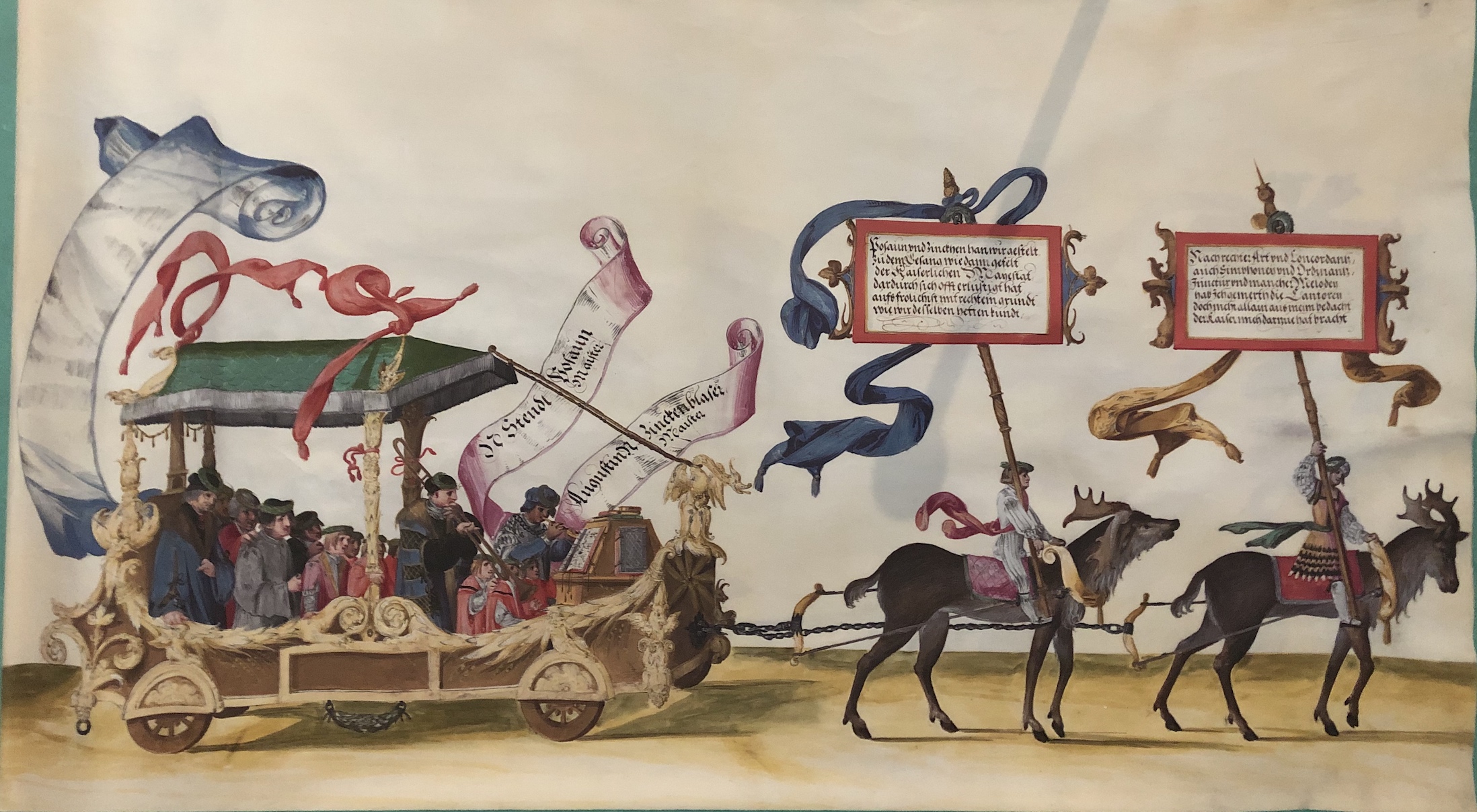I recently had the opportunity to direct, for the second time, a 6-week university study abroad program that was centered in Vienna, Austria, and included trips to Florence, Venice, and Salzburg. Here are a few of the things I found along the way. One of the items, a regal located in Vienna’s famous musical instrument museum, is just a better picture of an image I already had. The others are new discoveries made on the trip and will be added to the Trombone History Timeline. Also coming soon are several military images I was able to track down at the Austrian National Library.
1550-1600—A procession carriage inspired by the famous set of woodcuts, The Triumph of Maximilian (1526) features a trombone and cornetto performing with choir. Apparently influenced by the original Burgkmair woodcuts, the image does not follow any of the originals strictly. The trombone has a long slide and a back bow of tubing that extends past the player’s head, as would be expected, but the bell of the instrument extends too far, past the slide (Austrian National Library, Cod. Min. 77, fol. 11r; from a special exhibit on Emperor Maximilian at the Austrian National Library in 2019) (see detail and full image below; public domain).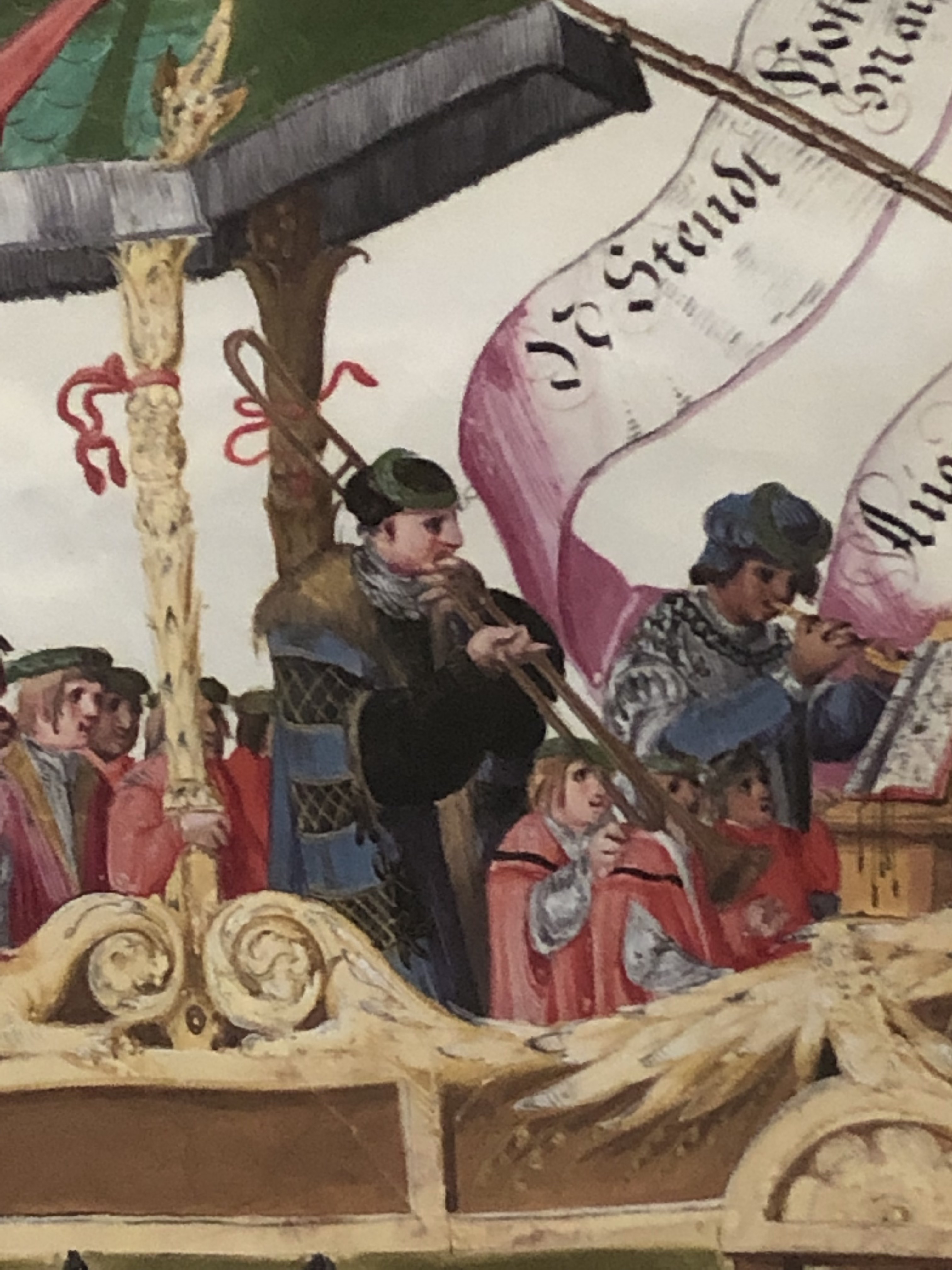
1690—Lambach, Austria: A regal, originating circa 1580 from Lambach Abbey, includes a case dated 1690. The case features depictions of various figures, probably muses, playing musical instruments, including trombone (see detail below; author’s personal photograph; special thanks to Kellyn Haley) (Vienna, Kunsthistorisches Historical Musical Instruments Museum, SAM 636).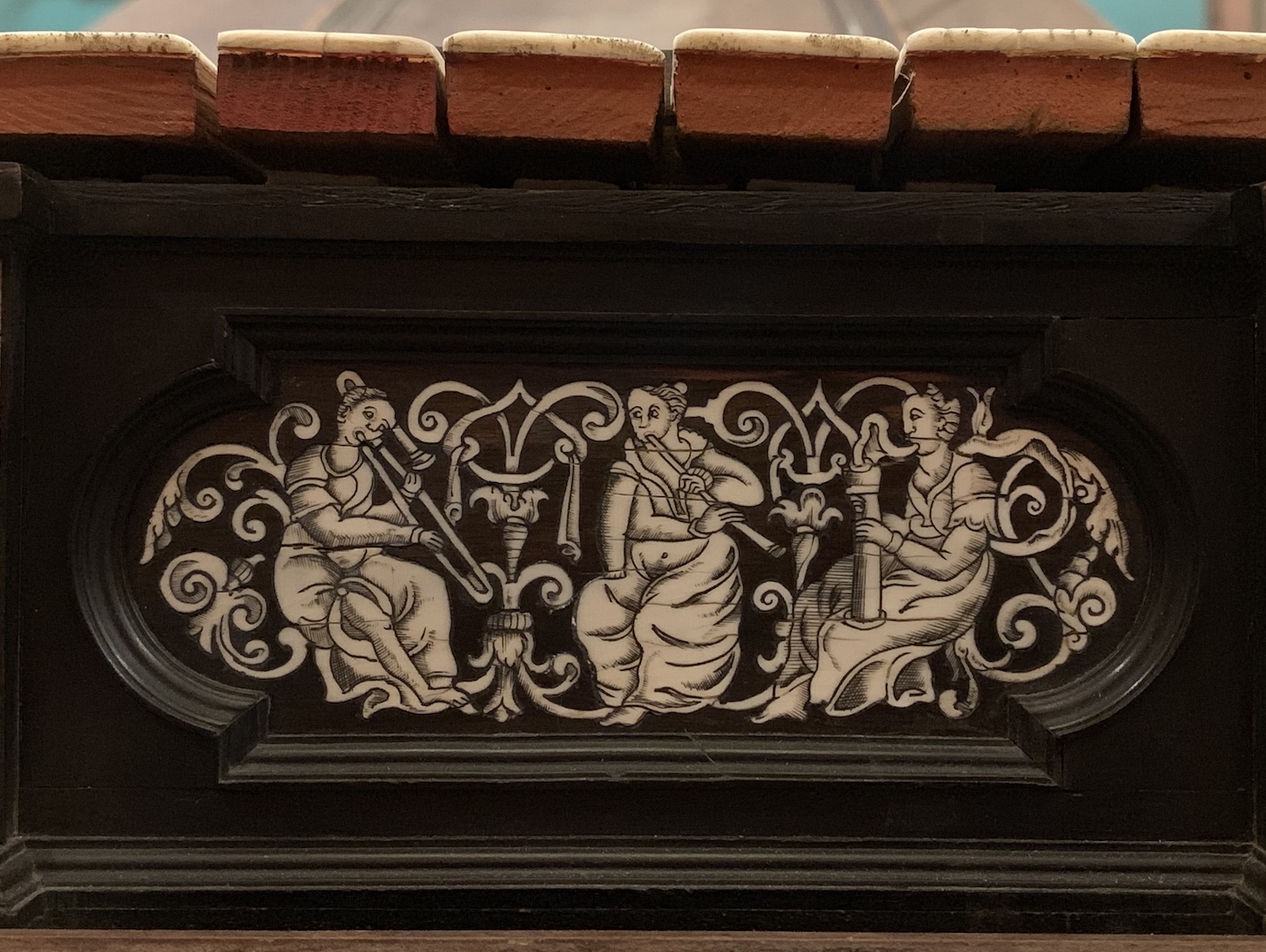
1729—Klosterneuburg, Austria: Stiftskirche Klosterneuburg (the monastery church) features a fresco by Johann Michael Rottmayr that includes an angel-trombonist among a group of angel-musicians (see detail below; author’s personal photograph).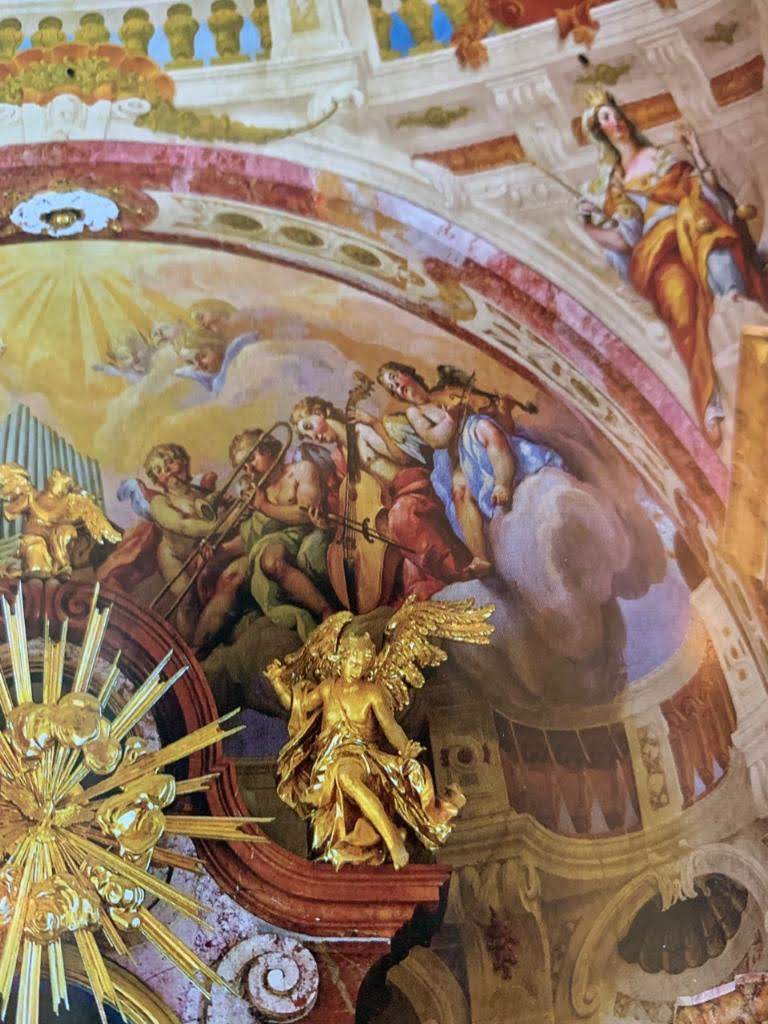
Before 1799—Turin, Italy: Serpent by Lorenzo Cerino (Museum of Musical Instruments of the Galleria dell’Academia, Florence; see below image; photograph by author).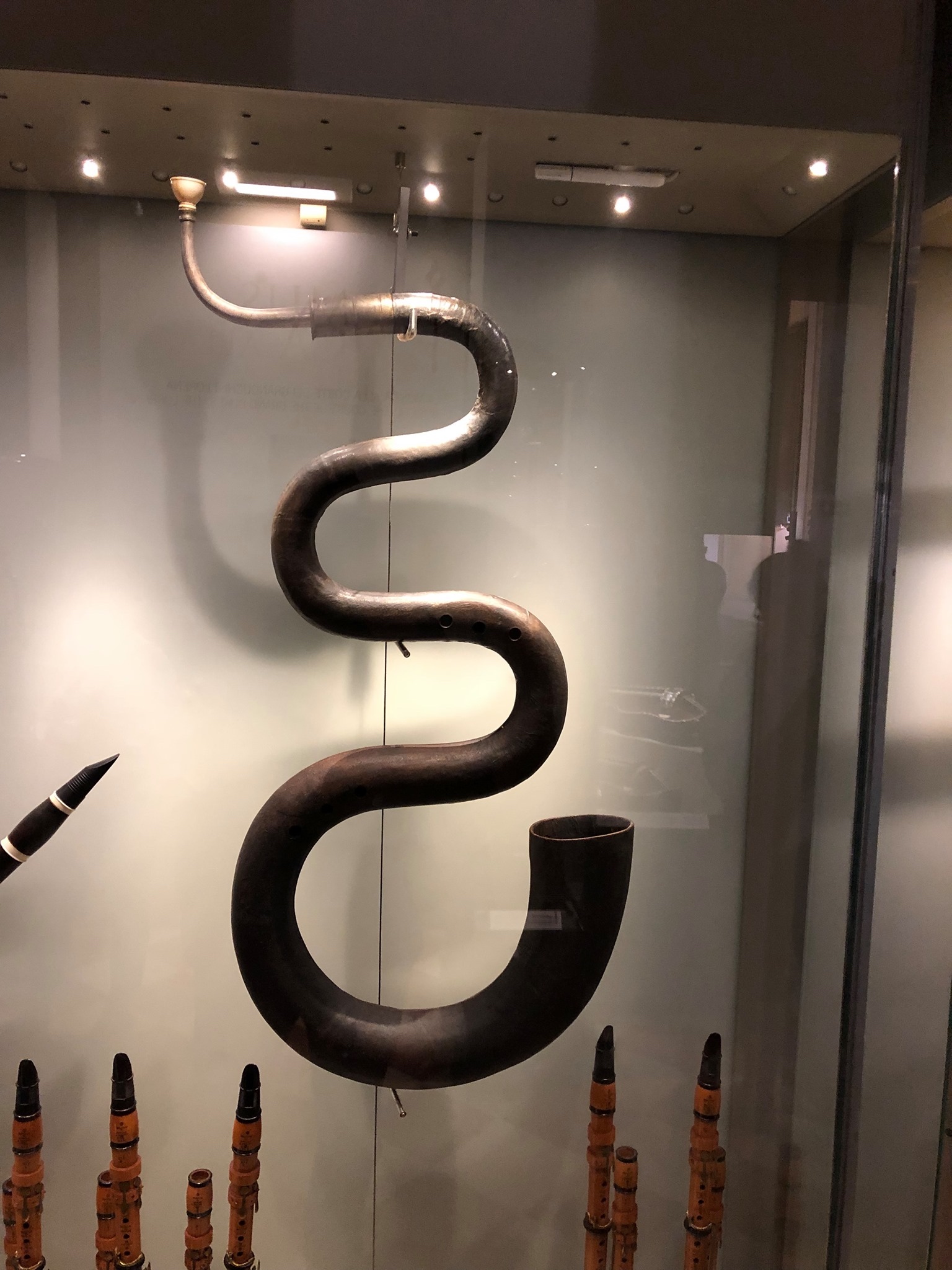
1813—Vienna, Austria: A set of three trombones by the workshop of Joseph Huschauer reveals instruments of three distinct lengths (Museum of Musical Instruments of the Galleria dell’Academia, Florence; see below image; photograph by author).